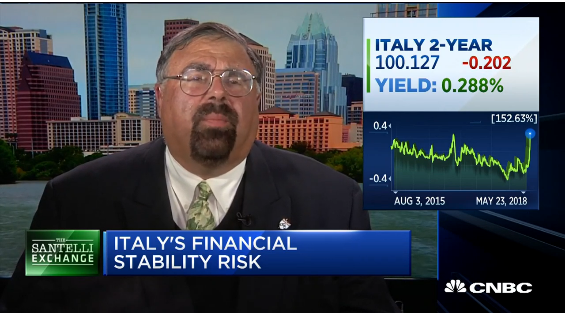Problem Canary in Bank Coal Mine?
The FDIC released first quarter numbers for the dwindling number of banks and total net income was $56 billion. All is well in banker land. However, Wolf Richter noticed something in one of the charts offered in the deposit insurer’s presentation something strange. While the number of problem banks was only 92 at quarter end, the assets of problem banks more than tripled to more than $60 billion. That means two or three banks of considerable size are now considered “problem” banks. The regulator doesn’t say which banks, so lines don’t form outside.
One wonders what the problem could be? Perhaps rising interest rates and falling currencies are reeking havoc on a couple banks’ derivative portfolios. The potential is high, given the notional derivative exposure is $205,986,323 and add six zeros. That’s what? $205 trillion? At the same time, the total assets of the 1360 banks holding those derivative contracts is just short of $16 trillion.
Derivatives with interest rate exposure totaled $155 trillion, while derivatives with foreign currency exposure totaled $41 trillion.
Back in 2013, George Schultze wrote an article for Forbes wondering,
who’s buying all these potential time bombs? Since they’re mostly hedging interest rate risk, who’ll win and who’ll lose when the Fed finally starts raising rates again? Will the derivatives buyers prove more adept at risk management than Orange County, Jefferson County, Lehman Brothers, and all the other bankrupt speculators littered along the derivatives superhighway?
That time has come. Rates are rising and a few emerging market currencies are crashing.
There will be roadkill on what Schulze calls the derivatives superhighway, we just don’t yet know who.








